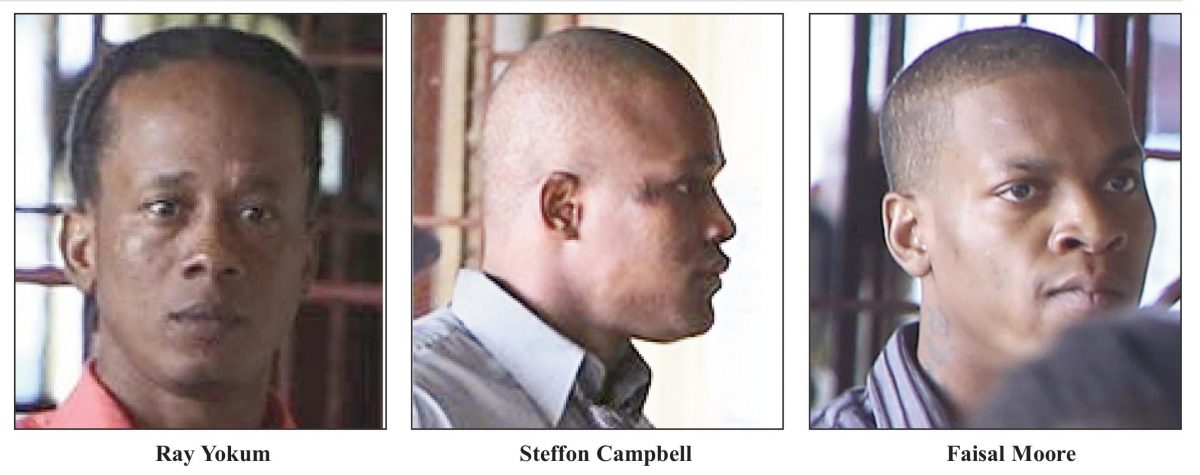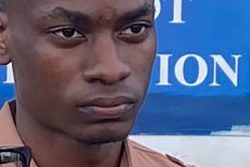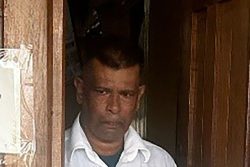With the prosecution failing to establish the identity of the person it said they murdered, Ray Yokum, Steffon Campbell and Faisal Moore were yesterday discharged of the crime and set free.
Justice Simone Morris-Ramlall before whom their trial was conducted, said that while there was testimony of an autopsy having been done on “a body,” there was “no admissible evidence as to its identity.”
Back in 2017, the jointly-charged trio was convicted and sentenced to 80 years each for the offence.
Finding that their defence was insufficiently put to a jury, however, the Guyana Court of Appeal in February of 2021, quashed the convictions and ordered that they be retried for the 2012 murder of Glen Xavier.
In her ruling following what she said were observations made from examining the evidence, Justice Morris-Ramlall noted that the accused were not before the court charged with the murder of a person unknown.
Against this background she said that there is no nexus between the person that Randolph Nedd—who testified to being a friend of the deceased—said he had taken from the scene, and the person the pathologist performed the autopsy on.
She said that Nedd provided no description of his friend, whether by ethnicity or otherwise. She said, too, that there was the evidence of policeman Winston Singh who testified that on the night in question at the hospital, Xavier’s body was pointed out to him.
The Judge said that the police officer did not, however, say who had pointed out the body to him; while noting that in any case, to have so said, would have amounted to inadmissible hearsay.
More importantly to note Justice Morris-Ramlall pointed out, however, was that Singh himself never testified to having known Glen Xavier, and further provided no description of the person he saw.
This Court said it observed that there was no nexus between the person that Nedd took to the hospital, and the man that Singh said he saw there with an injury in the region of his left armpit; while noting that Nedd never described any injury he saw; whether by location of the body or otherwise.
To establish the identity of the deceased, the judge said that the prosecution also tried to rely on the evidence of the pathologist having performed an autopsy on the body of “a deceased” to whom he referred as “Glen Xavier.”
The judge pointed out, however, that there was no evidence that the doctor had personal knowledge or familiarity with that named deceased person. The record on the report as to identification of the body the Judge said, is a record of a statement made by someone other than the pathologist; and therefore, constitutes inadmissible hear-say.
Justice Morris-Ramlall was keen on pointing out that the doctor’s report is admissible for the truth of its contents, only in relation to his observations, findings and opinions.
The prosecution the judge said, “for reasons best known to it,” led no evidence as to the identification of the body to the doctor, by someone who is related to, connected with, or otherwise familiar with the deceased.
The Judge said the Court also observed that during the preliminary inquiry into the matter, not only did a relative of Xavier testify as to identifying him to the doctor, but police had also given evidence of witnessing the identification and autopsy.
Justice Morris-Ramlall said that notwithstanding that deposition evidence, the prosecution closed its case without either calling those witnesses or even making an effort to tender their depositions.
The Judge recalled that the prosecution had said that it intended to make such an application, but subsequently indicated that it would no longer do so.
The result, the Judge said, is that there is therefore no evidence of an essential element in the case of murder, which the accused faced; and that there is also no admissible evidence of the death of the person named as the deceased in the indictment.
“This is an issue of law, and not one for the jury,” Justice Morris-Ramlall said.
She said that the case at bar does not just concern a mere person…but rather an identifiable person. “There is a body in this case,” she noted, while stating that there is the fact that no one familiar with Glen Xavier, even testified at the very least that he was missing.
She said that a post-mortem examination was done on a body, but that there is no admissible evidence as to its identity.
The Judge went on to say that though proof of death and identification can be achieved through circumstantial evidence, there must be objective facts from which a reasonable jury could safely or properly draw the inference that the person who died, was the named deceased.
She said that such facts were absent from the case; even as she noted that the determination of whether such facts exist, is one for the Court.
The Judge said it is only where a Court finds that such facts exist, that the case can be sent to the jury to determine what inferences are to be drawn.
Citing a plethora of case law precedent, Justice Morris-Ramlall noted that there can be no inference unless there are objective facts “from which to infer the other facts which it is sought to establish.”
She said, however, that “if there are no positively proved facts, from which the inference can be made, [then] the method of inference fails, and what is left is mere speculation or conjecture.”
Restating that the case concerns the identity of the deceased person—the death itself of the person named in the indictment—she said, “there is no admissible evidence that puts together…[and] coheres into one consistent narrative that Glen Xavier is deceased.”
The Judge sought to reemphasize also, that the accused were not charged for the murder of “a person unknown;” while noting that even in such a case the evidence linking the person removed from the scene, to the person on whom the autopsy was performed on, would have been necessary.”
In deference to case law precedent, Justice Morris-Ramlall said that where evidence of nexus is absent, thereby creating a lacuna in proof that the injury inflicted on the victim was the injury that resulted in death, then a vital element of the offence remains unproven by the prosecution.
She went on to note, however, that if there is evidence from which a jury can be satisfied beyond a reasonable doubt that it was the injury inflicted on the victim which caused his/her death, then there is no break in nexus or failure to prove factual causation.
The judge said that in the case at bar, there is absolutely no evidence of identification of the deceased whose body the pathologist performed a post mortem examination on, and so there is nothing that can properly be left to a jury for consideration on the issue.
The Judge said that at best, there is only evidence to suggest that it was “an Amerindian man” who was robbed and shot, and that, that man was Glen Xavier, who had been taken to the hospital for medical attention.
That is the highest the Judge said that the prosecution’s evidence can be taken on the issue. In the circumstances, Justice Morris-Ramlall said it is trite that where there is absence of an essential element in the evidence of the prosecution, a trial judge then has a duty to withdraw the case from the jury.
Accordingly, and notwithstanding that the accused had all completed leading their defences, the judge announced the withdrawal of the case from the jury and directed the panel to formally return a verdict of not guilty in favour of the accused trio.
The prosecution’s contention was that there was circumstantial evidence which spoke of the identification of the deceased named in the indictment.
Background
Xavier, 26, of Harlem, West Coast Demerara, the police had said, was fatally shot during a robbery at the Cornbread Mini Mart located on D’Urban Street, Georgetown on the night of May 9th, 2012.
Armed with handguns, some men carried out the attack, before escaping with an undisclosed amount of cash on two Honda CG motorcycles.
The victim, who was shot in his chest and left hand, later succumbed to his injuries. He died from haemorrhage and shock, due to gunshot injuries.
Another man was injured during the shooting.
They trio had appealed their sentence and conviction, arguing among other things that they had nothing to do with the crime and that their respective defences had not been adequately put to the jury by the trial judge.
The police had relied on alleged caution statements (CS) to prove its case, but the defence contended that Justice Navindra Singh who had conducted their first trial had misdirected the jury on how to properly treat with alleged confessions purportedly flowing therefrom.
The police had said that Yokum and Moore called “Hard Mouth,” had provided CS, but both accused denied this.
Regarding the issue of the defences being put to the jury, the appellate court said it not only found that that was not adequately put to the jury, but that it was not put in a fair and balanced way either, when compared with how the trial judge had put the state’s case to the jury.
The Court of Appeal had said that in an unbalanced way, Justice Singh sought to destroy the case for the defence and focused more on the prosecution’s case which ultimately took away from the cases on both sides being fairly and adequately advanced.
It was in these circumstances that the convictions were quashed and a new trial ordered.









